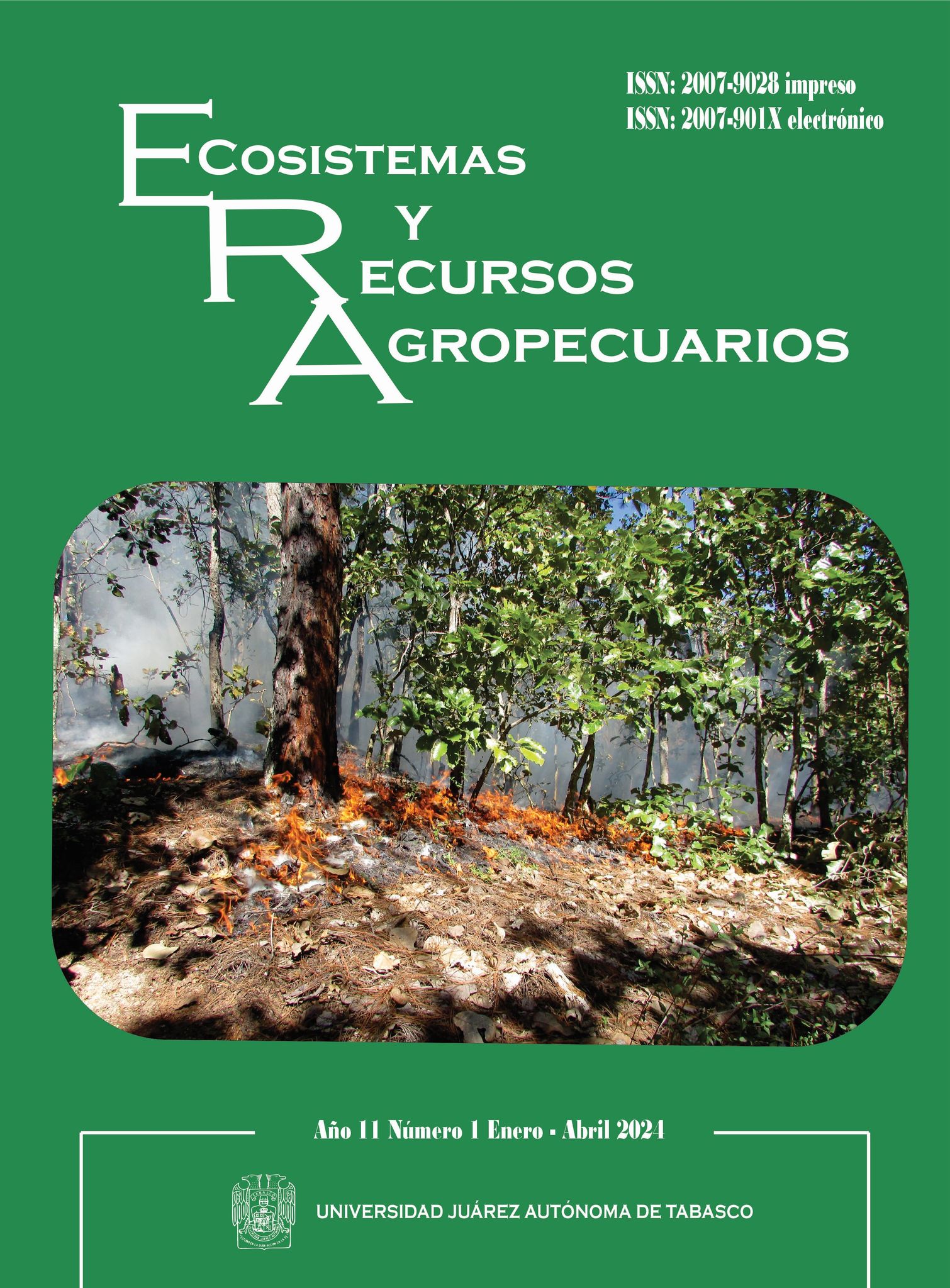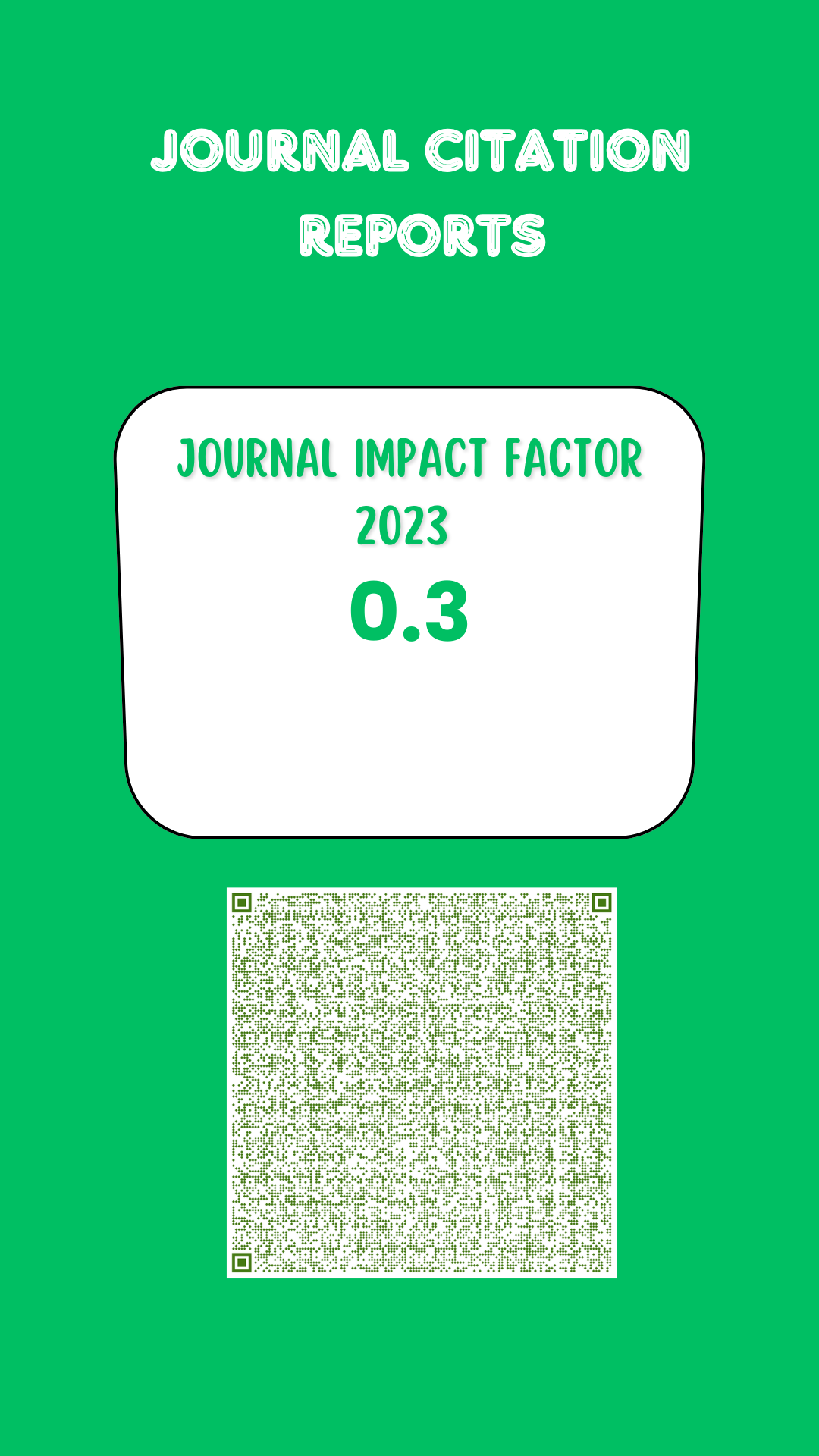Nanopartículas de óxido de zinc para incrementar rendimiento, compuestos bioactivos y actividad enzimática en lechuga
DOI:
https://doi.org/10.19136/era.a11n1.3939Palabras clave:
Lactuca sativa L, hidroponía, catalasa, peroxidasa, estrés oxidativoResumen
El uso de nanopartículas (NPs) en la agricultura presenta diversas aplicaciones, entre las cuales se destaca el potencial para aumentar las tasas de producción y mejorar los valores nutricionales de las plantas. Este estudio se centra en la aplicación foliar de nanopartículas de óxido de zinc (NPs-ZnO) en plantas de Lactuca sativa L. var. longifolia producidas en un sistema hidropónico con la técnica de película de nutrientes (NFT). La investigación se llevó a cabo durante el ciclo otoño-invierno 2022-2023. El objetivo principal de la investigación fue evaluar el impacto de las NPs-ZnO sobre el rendimiento, compuestos bioactivos y actividad enzimática en lechuga. Los tratamientos evaluados fueron: tratamiento control (0) y cuatro dosis equidistantes de 10, 20, 30 y 40 mg L-1 de nanopartículas; el diseño utilizado fue completamente al azar. Los resultados revelan que la concentración de zinc (Zn2+) en las plantas aumenta significativamente con la aplicación de NPs-ZnO, lo que conlleva a mayor producción de metabolitos beneficiosos para el cultivo. Es destacable que la concentración de 40 mg L-1 de NPs-ZnO haya mostrado mejoras significativas con respecto al tratamiento control en todas las variables evaluadas; peso fresco, materia seca, contenido de zinc, clorofila total, carotenoides totales, fenoles totales, capacidad antioxidante, flavonoides totales, vitamina C, catalasa y peroxidasa, sugiriendo que esta dosis específica podría ser óptima para obtener máximos beneficios. Por lo tanto, la aplicación foliar de NPs ZnO es una manera práctica de enriquecer las plantas de lechuga y mitigar las deficiencias de este micronutriente en la población.
Descargas
Referencias
Aebi HE (1983) Catalase. In: Methods of enzymatic analysis. Bergmeyer, HU Editorial Verlag Chemie Weinhem. pp. 273-286.
Amezcua RJC, Lara FM (2017) El zinc en las plantas. Ciencia 68: 28-35.
Apak R, Özyürek M, Güçlü K, Çapanoğlu E (2016) Antioxidant activity/capacity measurement. 2. Hydrogen atom transfer (HAT)-based, mixed-mode (electron transfer (ET)/HAT), and lipid peroxidation assays. Journal of Agricultural and Food Chemistry 64: 1028-1045. https://doi.org/10.1021/acs.jafc.5b04743.
Bartlett MS (1937) Properties of sufficiency and statistical tests. Proceedings of the Royal Society of London. Series A-Mathematical and Physical Sciences 160: 268-282. https://doi.org.10.1098/rspa.1937.0109.
Baslam M, Morales F, Garmendia I, Goicoechea N (2013) Nutritional quality of outer and inner leaves of green and red pigmented lettuces (Lactuca sativa L.) consumed as salads. Scientia Horticulturae 151: 103-111. https://doi.org/10.1016/j.scienta.2012.12.023.
Blackwell RD, Murray AJS, Lea PJ (1990) Enzymes of photorespiratory carbon pathway. In: Lea PJ (eds) Methods in plant biochemistry. Academic Press. USA. pp. 129-144. https://doi.org/10.1016/B978-0-12-461013-2.50015-0.
Bradford MM (1976) A rapid and sensitive method for the quantitation of microgram quantities of protein utilizing the principle of protein-dye binding. Analytical Biochemistry 72(1-2): 248-254. https://doi.org/10.1016/0003-2697(76)90527-3.
Brand-Williams W, Cuvelier ME, Berset C (1995) Use of a free radical method to evaluate antioxidant activity. LWT-Food Science and Technology 28: 25-30. https://doi.org/10.1016/S0023-6438(95)80008-5.
Cakmak I, Kutman UA (2018) Agronomic biofortification of cereals with zinc: A review. European Journal of Soil Science 69: 172-180. https://doi.org/10.1016/S0023-6438(95)80008-5.
Castillo-González J, Ojeda-Barrios D, Hernández-Rodríguez A, González-Franco AC, Robles-Hernández L, López-Ochoa GR (2018) Zinc metalloenzymes in plants. Interciencia 43(4): 242-248.
Choque R, Gemio R, Nogales J (2017) Estudio de propiedades moleculares de cuatro flavonoides de Baccharis boliviensis. CON-CIENCIA 5: 39-56.
Dimkpa CO, McLean JE, Latta DE, Manangón E, Britt DW, Johnson WP, Anderson AJ (2012) CuO and ZnO nanoparticles: phytotoxicity, metal speciation, and induction of oxidative stress in sand-grown wheat. Journal of Nanoparticle Research 14: 1-15. https://doi.org/10.1007/s11051-012-1125-9.
El-Azeim MN, Sherif MA, Hussien MS, Tantawy AA, Bashandy SO (2020) Impacts of nano and non nanofertilizers on potato quality and productivity. Acta Ecologica Sinica 40(5): 388–397. https://doi.org/10.1016/j.chnaes.2019.12.007.
Elsheery NI, Helaly MN, El-Hoseiny HM, Alam-Eldein SM (2020) Zinc oxide and silicone nanoparticles to improve the resistance mechanism and annual productivity of salt-stressed mango trees. Agronomy 10(4): 558. https://doi.org/10.3390/agronomy10040558.
Faizan M, Hayat S, Pichtel J (2020) Effects of zinc oxide nanoparticles on crop plants: a perspective analysis. Sustainable Agriculture Reviews 41: 83-99. https://doi.org/10.1007/978-3-030-33996-8.
Fortis-Hernández M, García-Delgado JD, Preciado-Rangel P, Trejo-Valencia R, Sánchez-Estrada A, Fortis-Hernández J (2022) Commercial and phytochemical quality in biofortified ‘orejona’ lettuce with zinc oxide nanoparticles. Notulae Botanicae Horti Agrobotanici Cluj-Napoca 50: 12969-12969. https://doi.org/10.15835/nbha50312969.
Galindo-Guzmán AP, Fortis-Hernández M, De La Rosa-Reta CV, Zermeño-González H, Galindo-Guzmán M (2022) Síntesis química de nanopartículas de óxido de zinc y su evaluación en plántulas de Lactuca sativa. Revista Mexicana de Ciencias Agrícolas 13: 299-308. https://doi.org/10.29312/remexca.v13i28.3284.
Garza-Alonso CA, Juárez-Maldonado A, González-Morales S, Cabrera-De la Fuente M, Cadenas-Pliego G, Morales-Díaz AB, Benavides-Mendoza A (2023) ZnO nanoparticles as potential fertilizer and biostimulant for lettuce. Heliyon 9: e12787. https://doi.org/10.1016/j.heliyon.2022.e12787.
Gombart AF, Pierre A, Maggini S (2020) A review of micronutrients and the immune system-working in harmony to reduce the risk of infection. Nutrients 12: 236. https://doi.org/10.3390/nu12010236.
Hatami M, Naghdi BH, Ghorbanpour M (2019) Nano-elicitation of secondary pharmaceutical metabolites in plant cells. Journal Medicinal Plants 18: 6-36. https://doi.org/10.29252/jmp.3.71.6.
Hossain Z, Yasmeen F, Komatsu S (2020) Nanoparticles: synthesis, morphophysiological effects, and proteomic responses of crop plants. International Journal of Molecular Sciences 21(9): 3056. https://doi.org/10.3390/ijms21093056.
Iziy E, Majd A, Vaezi-Kakhki MR, Nejadsattari T, Kazemi Noureini S (2019) Efects of zinc oxide nanoparticles on enzymatic and nonenzymatic antioxidant content, germination, and biochemical and ultrastructural cell characteristics of Portulaca oleracea L. Acta Societatis Botanicorum Poloniae 88(4): 3639. https://doi.org/10.5586/asbp.3639.
Khan ST, Malik A, Alwarthan A, Rafi SM (2022) The enormity of the zinc deficiency problem and available solutions; an overview. Arabian Journal of Chemistry 15(3): 103668. https://doi.org/10.1016/j.arabjc.2021.103668.
Lamaison JLC, Carnet A (1990) Contents in main flavonoid compounds of Crataegus Monogyna Jacq. and Crataegus laevigata (Poiret) D. C. flowers at different development stages. Pharmaceutica Acta Helvetica 65: 315-320. https://doi.org/10.4236/ajac.2011.28100.
Lichtenthaler HK, Wellburn AR (1983) Determinations of total carotenoids and chlorophylls a and b of leaf extracts in different solvents. Biochemical Society Transactions 11: 591-592. https://doi.org/10.1042/bst0110591.
Lira-Saldivar RH, Méndez Argüello B, Santos Villarreal GDL, Vera Reyes I (2018) Potencial de la nanotecnología en la agricultura. Acta Universitaria 28(2): 9-24. https://doi.org/10.15174/au.2018.1575.
Medina-Lozano I, Bertolín JR, Díaz A (2021) Nutritional value of commercial and traditional lettuce (Lactuca sativa L.) and wild relatives: Vitamin C and anthocyanin content. Food Chemistry 359: 129864. https://doi.org/10.1016/j.foodchem.2021.129864.
Méndez-Argüello BM, Lira-Saldivar RH, Vera-Reyes I (2016) Respuestas fisiológicas de plantas cultivadas en bioespacios por efecto de nanofertilizantes y zeolita. Agronano Tecnología, México 62-79.
Mohsenzadeh S, Moosavian SS (2017) Zinc sulphate and nano-zinc oxide effects on some physiological parameters of Rosmarinus officinalis. American Journal of Plant Sciences 8: 2635-2649. https://doi.org/10.4236/ajps.2017.811178.
Nandhini MR, Udayashankar SB, Niranjana SR, Sogaard O, Shetty H, Prakash HS (2019) Biofabricated zinc oxide nanoparticles as an eco-friendly alternative for growth promotion and management of downy mildew of pearl millet. Crop Protection 121: 103-112. https://doi.org/10.1016/j.cropro.2019.03.015.
Onsa GH, Saari N, Selamat J, Bakar J (2004) Purification and characterization of membrane-bound peroxidases from Metroxylon sagu. Food Chemistry 85: 365-376. https://doi.org/10.1016/J.FOODCHEM.2003.07.013.
Padayatt SJ, Daruwala R, Wang Y, Eck PK, Song J, Koh WS, Levine M (2001) Vitamin C: from molecular actions to optimum intake. In: Cadenzas E, Packer l (eds) Handbook of antioxidants. CRC press. Washington DC, USA. pp: 117-145.
Pascual MR, Pereda CM, Pérez R (1983) Inverse correlation between estrogen receptor content and peroxidase activity in human mammary tumors. Neoplasma 30: 611-613.
Prohens J (2014) Mejora genética de la calidad nutracéutica en hortalizas. Actas de Horticultura 65: 26-32.
Rivera-Gutiérrez RG, Preciado-Rangel P, Fortis-Hernández M, Betancourt-Galindo R, Yescas-Coronado P, Orozco-Vidal JA (2021) Zinc oxide nanoparticles and their effect on melon yield and quality. Revista Mexicana de Ciencias Agrícolas 12: 791-803. https://doi.org/10.29312/remexca.v12i5.2987.
Roohani N, Hurrell R, Kelishadi R, Schulin R (2013). Zinc and its importance for human health: An integrative review. Journal of Research in Medical Sciences 18(2): 144-157.
Sachdev S, Ansari SA, Ansari MI, Fujita M, Hasanuzzaman M (2021) Abiotic stress and reactive oxygen species: Generation, signaling, and defense mechanisms. Antioxidants 10(2): 277. https://doi.org/10.3390/antiox10020277.
Samreen T, Shah HU, Ullah S, Javid M (2017) Zinc effect on growth rate, chlorophyll, protein and mineral contents of hydroponically grown mungbeans plant (Vigna radiata). Arabian Journal of Chemistry 10: S1802-S1807. https://doi.org/10.1016/j.arabjc.2013.07.005.
Shi M, Gu J, Wu H, Rauf A, Emran TB, Khan Z, Mitra S, Aljohani ASM, Alhumaydhi FA, Al-Awthan YS (2022) Phytochemicals, Nutrition, Metabolism, Bioavailability, and Health Benefits in Lettuce—A Comprehensive Review. Antioxidants 11: 1158. https://doi.org/10.3390/antiox11061158.
Singleton VL, Orthofer R, Lamuela-Raventós RM (1999) Analysis of total phenols and other oxidation substrates and antioxidants by means of folin-ciocalteu reagent. Methods in Enzymology 299: 152-178. https://doi.org/10.1016/S0076-6879(99)99017-1.
Steiner AA (1984) The universal nutrient solution. In: International Society for Soilless Culture. Wageningen, The Netherlands. pp: 633-649.
Steinskog DJ, Tjostheim DB, Kvamsto NG (2007) A cautionary note on the use of the Kolmogorov–Smirnov test for normality. Monthly Weather Review 135: 1151-1157. https://doi.org/10.1175/mwr3326.1.
Sun H, Du W, Peng Q, Lv Z, Mao H, Kopittke PM (2020) Development of ZnO nanoparticles as an efficient Zn fertilizer: Using synchrotron-based techniques and laser ablation to examine elemental distribution in wheat grain. Journal of Agricultural and Food Chemistry 68(18): 5068-5075. https://doi.org/10.1021/acs.jafc.0c00084.
Yang X, Gil M, Yang Q, Tomás-Barberán FA (2021) Bioactive compounds in lettuce: Highlighting the benefits to human health and impacts of preharvest and postharvest practices. Comprensive Reviews in Food Science and Food Safety 21: 4-45. https://doi.org/10.1111/1541-4337.12877.
Zahedi SM, Moharrami F, Sarikhani S, Padervand M (2020) Selenium and silica nanostructure-based recovery of strawberry plants subjected to drought stress. Scientific Reports 10: 1-18. https://doi.org/10.1038/s41598-020-74273-9.
Descargas
Publicado
Número
Sección
Licencia
Derechos de autor 2024 Ecosistemas y Recursos Agropecuarios

Esta obra está bajo una licencia internacional Creative Commons Atribución-NoComercial-CompartirIgual 4.0.
1. Política propuesta para revistas de acceso abierto
Los autores/as que publiquen en esta revista aceptan las siguientes condiciones:
1. Los autores/as conservan los derechos de autor y ceden a la revista el derecho de la primera publicación, con el trabajo registrado con la licencia internacional Creative Commons Reconocimiento-No comercial-Compartir igual 4.0 .de atribución de Creative Commons, que permite a terceros utilizar lo publicado siempre que mencionen la autoría del trabajo y a la primera publicación en esta revista.
2. Los autores/as pueden realizar otros acuerdos contractuales independientes y adicionales para la distribución no exclusiva de la versión del artículo publicado en esta revista (p. ej., incluirlo en un repositorio institucional o publicarlo en un libro) siempre que indiquen claramente que el trabajo se publicó por primera vez en esta revista.
3. Se permite y recomienda a los autores/as a publicar su trabajo en Internet (por ejemplo en páginas institucionales o personales) antes y durante el proceso de revisión y publicación, ya que puede conducir a intercambios productivos y a una mayor y más rápida difusión del trabajo publicado (vea The Effect of Open Access).

Este trabajo está sujeto a una licencia internacional Creative Commons Reconocimiento-No comercial-Compartir igual 4.0 .



